Comprehensive Guide to Meteorite Classification


Intro
Meteorites have captivated human imagination for centuries. These fragments from space carry tales from the cosmos, informing us about the origins of our solar system. The classification of meteorites isn't merely a scientific exercise; it's a gateway to understanding the history of celestial bodies, their formation, and how they relate to our planet. The intricate world of meteorites includes various types, each with distinct characteristics that reflect their origins—be it asteroids, comets, or even the Moon.
In this guide, we will methodically examine meteorite classification, diving into the techniques used to differentiate among types, as well as the significance of these classifications. We'll explore why understanding meteorites matters not just to scientists but also to collectors and enthusiasts eager to enrich their knowledge about these remarkable objects from space. As we progress, you'll uncover how the characteristics of meteorites reveal secrets about the very building blocks of our solar system.
Featured Collectible of the Month
- Overview
This month, the spotlight shines on the Allende meteorite, a notable chondrite that fell to Earth in 1969 in Mexico. Regarded as one of the most studied meteorites, Allende exemplifies the early solar system's conditions, making it invaluable for research. The meteorite contains a wealth of inclusions and isotopes that serve as time capsules of our cosmic past. - Historical Significance
The fall of the Allende meteorite was pivotal in defining the modern age of meteoritics. Not only did it provide scientists with an abundance of material for study, but it also fueled interest and passion within the collector community. Owning a piece of the Allende is akin to having a fragment of the universe itself, holding stories of formation, transformation, and the dynamics of our celestial neighborhood.
Identification Techniques
Identifying meteorites can be a daunting task, but with the right techniques, you can confidently distinguish these celestial objects from terrestrial rocks. Here are some methods to enhance your identification skills:
Visual Characteristics
- Surface Texture: Most meteorites present a fusion crust, a smooth, shiny outer layer formed during atmospheric entry. Look for this distinctive feature.
- Color Variations: Meteorites can exhibit a range of colors: metallic gleams from iron-enriched variants, or dull, earthy tones from stony types.
- Shape and Weight: Many meteorites are irregularly shaped and denser than ordinary rocks. A heftier feel often signifies a meteorite.
Resources for Identification
To further assist with identification, here are some excellent resources:
- Online Forums: Communities on platforms like Reddit provide invaluable advice and experienced opinions on potential meteorite finds.
- Books and Guides: Refer to titles such as "Meteorites: A Cultural History" or "The Meteorite Identification Handbook" that offer comprehensive insights.
- Local Museums: Many natural history museums have exhibits showcasing meteorites and often host workshops for enthusiasts.
"Each meteorite is a page in the history of space, giving us glimpses into the formation of our solar system."
As we continue, this guide will delve deeper into specific types of meteorites, their characteristics and how they can be appreciated not just as scientific specimens, but also as collectible treasures that bridge the gap between science and the awe of our vast universe.
Preamble to Meteorites
Meteorites hold a certain allure for many, especially for those with a penchant for collecting rocks and fossils. These remnants of celestial bodies tell tales not just of outer space, but also provide insight into the very building blocks of our solar system. Understanding meteorites is fundamental to grasping the vast, intricate history of our universe; this is why the topic of meteorites warrants a closer look.
One of the critical aspects to appreciate is how meteorites bridge the gap between our Earth and the cosmos. These rocky visitors are not merely collections of minerals thrown together in an otherworldly dance; they carry stories of planetary formation, cosmic collisions, and even the conditions of the early solar system.
Defining Meteorites
So, what exactly are meteorites? In simple terms, a meteorite is a solid fragment that survives its passage through the Earth's atmosphere and lands on its surface. They begin their journey as meteoroids, which are generally small rocks or particles floating in space. When one of these meteoroids enters our atmosphere and creates a bright streak—commonly known as a meteor or shooting star—it is merely giving us a glimpse of its origin before it either burns up completely or lands upon our planet.
There are many flavors of meteorites, and scientists categorize them based on factors like composition, structure, and origin. This classification is crucial because it not only helps in understanding different types of meteorites, but it also sheds light on their origins, whether they are from the Moon, Mars, or even the asteroid belt.
Historical Perspectives
The fascination with meteorites isn’t a recent phenomenon; in fact, it dates back thousands of years. Ancient cultures saw these celestial bodies as messengers from the gods or signs of omens. Some of the earliest documented meteorite falls can be traced back to China in 2000 BC, highlighting their importance even in ancient civilizations.
As time progressed, notable finds like the iron meteorite at Sikhote-Alin in Russia or the famed Hoba meteorite in Namibia have shaped the narrative of meteorite collection and study. Each significant discovery has added layers to our understanding of not only meteorites but also the nature of our universe as we interpret the tales they tell.
Take the 1803 fall in the UK, when hundreds of stones rained down on the town of L'Aigle, completely shattering the preconceived notion that stones falling from the sky were nothing more than a myth. This event ignited considerable scientific interest and exploration in meteorite research, which continues to this day.
Overall, the importance of meteorites—both historical and scientific—cannot be understated. These celestial rock fragments are not just objects of scientific inquiry; they symbolize humanity's quest for understanding our place in the vast cosmos.
The Importance of Meteorite Classification
Understanding meteorite classification is not merely an academic exercise; it holds significant relevance in various fields such as geology, astronomy, and planetary science. By categorizing meteorites, we glean insights into the evolution of celestial bodies, the formation of planets, and even the origins of life itself. This foundational knowledge equips researchers and collectors alike with the ability to identify meteorites accurately, fostering more expansive investigations into their properties and historical context.
Understanding Planetary Formation
Meteorites act as time capsules that offer glimpses into the early solar system. Each type of meteorite—be it stony, iron, or stony-iron—carries distinct traits that tell a unique story of planetary formation. For instance, chondrites, being the most primitive, contain tiny spherical particles called chondrules formed in the solar nebula. These particles give scientists clues about the conditions that existed over 4.5 billion years ago when the solar system was still taking shape.
The study of meteorite characteristics allows scientists to:
- Reconstruct the history of the solar system: By comparing various meteorite compositions, researchers can trace back to the processes that led to planet formation.
- Identify differentiable processes: Meteorite types reveal whether they have undergone sorting or segregation, indicative of their parent bodies’ evolution.
- Understand elemental abundance: Identification of isotopic ratios within meteorites helps unveil the distribution of elements during the nascent stages of the solar system.
In discussing planetary formation, it’s crucial to underscore how elements from meteorites inform theories about the conditions that fostered the creation of planets. This knowledge can eventually deepen comprehension in areas like planetary atmospheres and the potential for extraterrestrial life.
Implications for Science and Research
The classification of meteorites extends far beyond academic interest; it has profound implications for scientific research and advancements. For instance, meteorites have been instrumental in confirming isotopic anomalies related to cosmic events, shedding light on supernova explosions and the early solar system’s dynamics. This understanding prompts researchers to refine models concerning cosmic origins and formation.
Furthermore, meteorites serve as unique materials for practical research:
- Biological studies: Certain meteorites bear organic compounds, prompting investigations into the origins of life. The discovery of amino acids in meteorites bolsters theories about the transport of life’s building blocks through space.
- Material science: Research into meteorite compositions aids in the development of new technologies and materials, drawing inspiration from their unique properties.
- Planetary defense: Understanding the origins and compositions of meteorites helps scientists develop strategies to mitigate potential asteroid threats to Earth.
The importance of meteorite classification can neither be overstated nor neglected; it serves as a gateway to comprehending our place in the universe.
Classification Categories
Meteorite classification serves as the backbone of our understanding of these intriguing celestial objects. By categorizing meteorites, scientists can unlock secrets of our solar system's formation and the nature of planetary bodies. The Complex interplay of mineral composition and formation history makes classification crucial not just for academic purposes, but also for collectors and enthusiasts alike. Each category offers a lens through which we can observe the universe's past and present, shedding light on processes that have shaped Earth and other planets for billions of years.
Stony Meteorites
Stony meteorites, or silicate meteorites, are the most common type found, making up about 93% of all meteorites. They primarily consist of silicate minerals, which include both olivine and pyroxene. Two major subcategories exist within stony meteorites: chondrites and achondrites.
Chondrites are characterized by their chondrules, tiny spherical beads formed during the early solar system. These mineral grains hold clues to the solar system's infancy. Conversely, achondrites have undergone significant alteration, differentiating them from their chondritic cousins. Their study can illustrate processes like planetary differentiation and volcanic activity.
Understanding stony meteorites not only provides insights into the early solar system but helps collectors identify genuine specimens. Recognizing their distinct features, such as fusion crusts—dark, glassy surfaces formed during atmospheric entry—can be the difference between treasure and trinket in the collector’s cabinet.
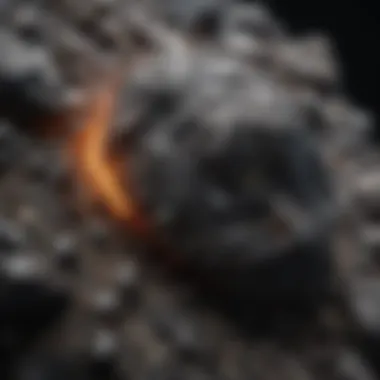
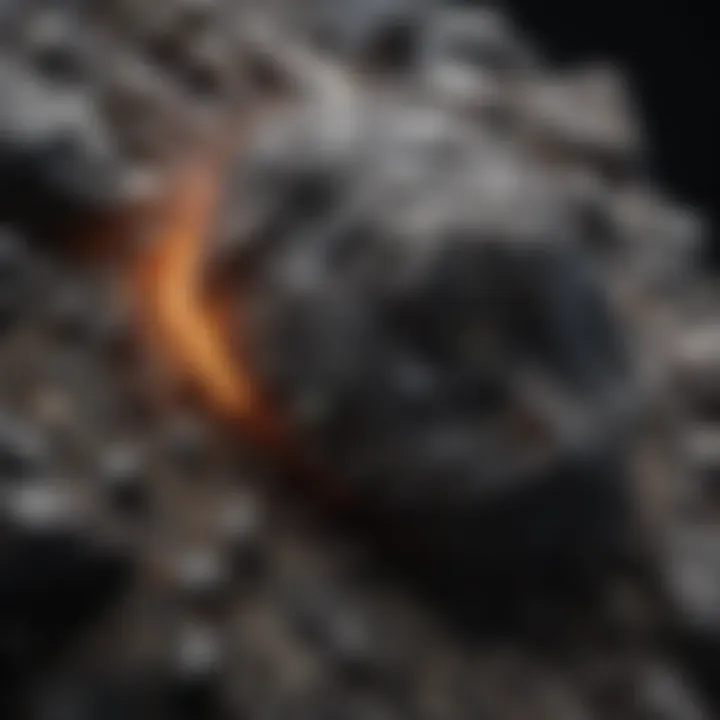
Iron Meteorites
Iron meteorites consist primarily of iron-nickel alloys. Unlike stony meteorites, they originate from the metallic cores of differentiated bodies, often asteroids. These meteorites showcase significant Widmanstätten patterns, unique crystalline structures visible when polished and etched. These patterns reveal the cooling history of the meteorite, which in turn indicates the size and cooling rates of the parent body from which they derive.
The classification of iron meteorites typically breaks down into three types: octahedrites, hexahedrites, and ataxites. Each offers differing amounts of nickel and distinctive crystalline arrangements. Iron meteorites serve as a record of core formation processes and can bridge the gap between scientists and collectors, leading to discussions about the cosmic events that led to their formation.
Stony-Iron Meteorites
Stony-iron meteorites are a rare and fascinating blend of stony materials and metallic components. They can be divided into two primary categories: pallasites and mesosiderites. Pallasites feature a breathtaking mix of olivine crystals embedded in an iron-nickel matrix, making them visually spectacular and highly sought after by collectors. Mesosiderites, on the other hand, are a combination of metal and silicate materials thought to result from collisions between stony and metallic bodies.
These meteorites are not just an aesthetic wonder; they hold vital information about the processes that govern the formation and evolution of celestial bodies. Collectors value them not just for their beauty, but for their contribution to understanding the dynamic history of the solar system.
"Evaluating the different types of meteorites and understanding their origins transforms how we view our cosmic neighborhood. Each specimen carries a story worthy of exploration and appreciation."
In summary, the classification of meteorites extends beyond mere taxonomy; it fosters an understanding of their origins and significance in the grand narrative of the solar system, thus capturing the imagination of scientists and collectors alike.
Detailed Look at Stony Meteorites
Stony meteorites are fundamental to our understanding of the universe. They account for the majority of meteorite falls and vary widely in their composition and origins. Analyzing these meteorites allows scientists to delve deeper into the history of our solar system, making them not only objects of fascination for collectors, but also key pieces in the cosmic puzzle.
Chondrites and Their Significance
Chondrites are revered in the field of meteorite classification due to their primitive nature. These stony meteorites are the oldest materials we can study, having formed shortly after the birth of our solar system. They contain tiny round particles known as chondrules, which provide clues to early solar and planetary formation processes.
The significance of chondrites lies in their composition. They are comprised of a mix of silicate minerals and metal grains. This gives chondrites a unique position in the classification since they often represent the building blocks of planets. Their isotopic signatures can reveal the conditions of the early solar system, shedding light on how celestial bodies formed and evolved.
Collecting chondrites can be quite rewarding — not only for their aesthetic appeal but for the scientific stories they carry. To the dedicated collector, owning a piece of chondrite is akin to holding a fragment of time, a slice of cosmic history.
Here’s a concise list of significant aspects concerning chondrites:
- Oldest known meteorites: They reveal the solar system’s earliest events.
- Diverse composition: Studying different chondrite types aids in understanding planetary differentiation.
- Research potential: They offer insights into processes like condensation and accretion in forming planets.
Achondrites: The Unchondrified
Achondrites, in contrast to their chondritic counterparts, represent a class of stony meteorites that have undergone significant alteration post-formation. Lacking chondrules, achondrites are more differentiated and can come from parent bodies that have experienced geological activity. This gives them a diverse array of textures and chemical compositions, often reflective of the history of their parent bodies, such as Mars or the Moon.
The study of achondrites provides a different but no less vital perspective on the making of celestial bodies. For instance, some achondrites originate from the differentiated* planetesimals that have undergone melting and solidification processes. Thus, utilizing achondrites can help scientists piece together the conditions that led to the formation of solid crusts and atmospheres on planets.
When it comes to collecting achondrites, their diverse appearances can be very appealing. They often come in various colors and structures, making them desirable for display. However, their analytical significance is unparalleled, as they can unveil stories of ancient volcanic activity and crustal evolution on other worlds.
Some key points about achondrites include:
- Diverse origins: They can come from both asteroids and bodies like the Moon or Mars.
- Geological history: They show evidence of differentiation and volcanic activity.
- Rarity: As most achondrites are more scarce than chondrites, they can be highly sought after by collectors.
"Meteorites are relics of the past and harbingers of our cosmic heritage; they hold secrets about our neighborhood in space."
In summary, stony meteorites, through chondrites and achondrites, allow humans to connect with our solar history. They spark curiosity, questions, and, ultimately, a better understanding of our celestial surroundings.
Iron Meteorites: Characteristics and Origin
Iron meteorites hold a special place in both science and the hearts of collectors. Their dense, metallic nature makes them distinguishable from their stony counterparts, providing insight not only into the origins of meteorites but also the processes that shaped our early solar system. Understanding iron meteorites helps enthusiasts appreciate the complexity of cosmic materials that arrive on Earth. With their unique properties, each piece tells a story of its formation and the violent processes that produced it.
Types of Iron Meteorites
Iron meteorites can be categorized into two main types based on their composition: cooling and non-cooling. Different subdivisions arise from intricate structures and formation characteristics.
- Hexahedrites: These meteorites contain 90% or more metallic iron, resulting from slow cooling processes. Their structure typically appears as coarse grains, gleaming with a mirror-like surface. Iron-nickel alloys are more prominent here.
- Skeletal Iron Meteorites: Contrary to hexahedrites, skeletal iron meteorites exhibit a unique arrangement of iron that resembles a skeletal structure, created during rapid cooling.
- Octahedrites: The most common type, featuring a blend of iron and nickel. Octahedrites show a distinct pattern known as the Widmanstätten structure, best seen when etched, revealing intricate designs.
- Ataxites: This rarer type contains high amounts of nickel and shows minimal crystallization. They often originate from the core of differentiated parent bodies.
Understanding these types enriches one's collection and gives greater context to their origins and their roles in the solar system’s history.
Formation Processes
Iron meteorites form under extreme conditions within planetary bodies that have undergone differentiation, a process that separates materials by density, leading to the formation of a metal-rich core. The origins of individual iron meteorites can be traced as follows:
- Core Formation: In larger celestial bodies, heavier elements sink towards the center, creating a molten metallic core from which iron meteorites derive. This core solidifies over millions of years, eventually leading to the formation of iron-rich meteorites after the body breaks apart.
- Collision Events: During collisions with other celestial objects, fragments of these differentiated bodies can be ejected into space. Over time, these fragments may enter the Earth's atmosphere, surviving the fiery descent to become meteorites.
- Cooling Processes: As the parent body cools, unique crystallization patterns develop inside the iron meteorites. The rate of cooling can influence the structure and, consequently, the classification of the meteorite as it falls to Earth.
"The intricate dance of iron and nickel in these celestial bodies is not just a tale of metal but a narrative of our cosmic heritage."
In summary, the study of iron meteorites encompasses much more than their physical characteristics; it reveals the dynamic interplay of cosmic processes that continue to influence our planet today. Understanding these elements enhances not just the scientific grasp but also ignites passion among collectors who seek to unravel the stories embedded in these remnants of the universe.
Stony-Iron Meteorites: A Unique Composition
Stony-iron meteorites hold a special place in the field of meteorite classification due to their intriguing composition and unique properties. These meteorites contain both silicate minerals and metallic iron-nickel, embodying a blend of the two major categories—stony and iron meteorites. This dual nature not only makes them fascinating to study but also offers insights into the processes that shaped the solar system.
Understanding stony-iron meteorites is crucial for various reasons. First, they bridge the knowledge gap between stony and metallic meteorites, making them key to deciphering the history of parent bodies. Second, their varied elemental compositions reflect the complex processes of differentiation in asteroids, which in turn can give clues to planetary formation. It's a fascinating intersection of geology, astronomy, and history—all wrapped up in these celestial rocks.
Defining Features
Stony-iron meteorites are characterized by their unique combination of metal and silicate minerals. Most notable among their defining features are:
- Composition: A typical stony-iron meteorite consists of about 60% metal and 40% silicates. This balance creates a distinctive appearance, often showcasing shiny metal surfaces alongside rougher, mineral-rich areas.
- Mineralogy: Common minerals include olivine and pyroxene, which can be identified under a microscope. Their textures may also aid in classification, as some stony-irons appear banded or exhibit fine-grained matrices.
- Density and Weight: Generally heavier than stony meteorites but lighter than pure iron ones, stony-iron meteorites can often feel quite distinct in one's hand.
"The dual presence of metal and silicate puts stony-iron meteorites in a league of their own, making them a vital part of the cosmic puzzle."
The blend of metal and mineral not only captures attention but holds secrets to the evolutionary stories of the origins of the solar system.
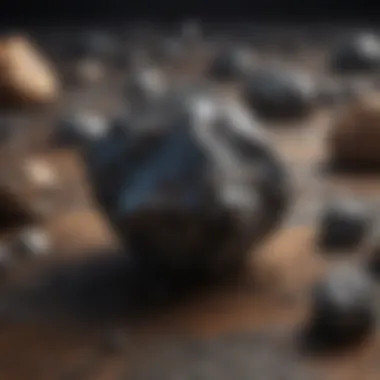

Examples and Sources
Numerous stony-iron meteorites have been recorded, each with distinct characteristics and provenance. Two noteworthy examples include:
- Pallasite: One of the most notable types of stony-iron meteorites, pallasites are composed of olivine crystals set in a metallic matrix. They are often stunning to look at, with their vibrant green olivine contrasting beautifully against the shiny nickel-iron. Notable finds include the Esquel meteorite, discovered in Argentina, which is often regarded as one of the finest examples of a pallasite.
- Mesosiderite: Mesosiderites represent another category, featuring a mix of metal and silicate, with more of a heterogeneous blend compared to pallasites. They often contain a high percentage of inclusions and show signs of metamorphism. The Bremervörde meteorite from Germany is a famous specimen.
Places where stony-iron meteorites have been found are scattered across the globe, with significant finds occurring in locations such as:
- The Sahara Desert, where many meteorites have been unearthed due to the arid conditions.
- Antarctica, where thousands of specimens await discovery under the ice sheets, preserved in pristine condition.
In summary, stony-iron meteorites are more than just geological curiosities; they are pivotal in our understanding of planetary processes. Their unique composition and defining features make them a subject of fascination for both scientists and collectors alike.
Methodologies in Meteorite Classification
Meteorite classification is an intricate science that demands a meticulous approach. The methodologies employed are crucial for understanding the diverse and complex nature of these celestial objects. As enthusiasts delve into the world of meteorites, grasping these methodologies allows for a deeper appreciation of the findings in the field.
Physical and Chemical Analysis
Physical and chemical analysis stand as the gatekeepers in the realm of meteorite classification. These techniques provide foundational data that guide researchers in determining not just the type of meteorite, but also insights into its history and formation.
In physical analysis, parameters such as texture, mineral content, and structure of the meteorite are meticulously examined. For instance, chondrites, which hold some of the oldest material in the solar system, exhibit a unique texture characterized by chondrules—small spherical particles that stand out in the matrix.
The chemical analysis, on the other hand, digs deeper into the elemental composition. Often, inner structures reveal distinct signatures that indicate their origin. For a collector, knowing how to read these signatures can be invaluable. The composition of the meteorite can clarify whether it stemmed from the mantle of a differentiated asteroid or a primitive parent body.
- Key Aspects of Physical and Chemical Analysis:
- Texture: Affects identification and classification.
- Mineral composition: Helps trace back to cosmic origins.
- Elemental ratios: These ratios often reveal a meteorite's parent body.
It is through these analyses that experts make informed decisions about classification, thus playing a vital role in advancing our cosmic understanding.
Spectroscopic Techniques
Spectroscopic techniques have revolutionized our approach to meteorite classification over the last couple of decades. Using light to measure how meteorite materials absorb and reflect specific wavelengths, researchers can unveil information that isn’t always physically observable. This method opens a window into the chemical makeup and even the thermal history of the meteorite.
Various types of spectroscopy exist, but infrared and Raman spectroscopy are particularly prominent in the meteorite community. For instance, infrared spectroscopy allows scientists to identify and characterize mineral contents by observing the unique fingerprints of materials for absorption in the infrared spectrum. This method can dissect the mineral composition and point toward possible origins of the meteorite samples. On the other hand, Raman spectroscopy focuses on the scattering of monochromatic light, providing distinct details about molecular structures. It’s especially powerful in confirming the presence of specific minerals that traditional methods might overlook.
"Spectroscopy reveals the untold stories locked within the atomic makeup of meteorites, bridging the gap between Earth and the cosmos."
As meteorite enthusiasts or collectors, one may find it beneficial to familiarize themselves with these spectroscopic techniques. While you may not have access to sophisticated spectroscopic instruments, understanding what these techniques entail can elevate your analyses of collected specimens and reveal the fascinating tales that they might tell.
In summary, the methodologies of physical and chemical analysis along with spectroscopic techniques enrich our understanding of meteorites, serving both the scientific community and avid collectors alike. Mastering these techniques ensures that we not only classify the meteorites accurately but interpret their cosmic significance better.
Major Meteorite Finds
The realm of meteorites is not just about classification; it’s rich with stories and discoveries that can spark the curiosity of even the most seasoned collector or scientist. Major meteorite finds shed light on the history of our solar system and provide tangible evidence of cosmic events that are otherwise abstract. This section takes a closer look at remarkable instances of meteorite discoveries spanning centuries, emphasizing their significance, benefits, and considerations for collectors.
"Each meteorite finds a way to tell its story, the history of our universe carved in stone."
Notable Examples from History
Throughout history, some meteorites have captured the excitement and intrigue of both the scientific community and the public. One standout is the Hoba Meteorite, discovered in Namibia, which holds the title as the largest meteorite ever found. Weighing around 60 tons, it remains in place where it landed approximately 80,000 years ago. Its sheer size and the fact that it's composed mostly of iron-nickel allow researchers to study its composition and formation closely, providing context not only for the meteorite itself but also for celestial materials.
Another significant find is the Tissint Meteorite. This specimen, which fell in Morocco in 2011, was notable for being the first Martian meteorite found to have intact amino acids. The opportunity to study Tissint could potentially provide insights into the possibility of past life on Mars, illustrating how meteorites can carry clues to other worlds.
Additionally, the Allende Meteorite, which fell in Mexico in 1969, is renowned for being the most studied meteorite in history. Its rich mineralogy has made it a point of interest among scientists, leading to the discovery of pre-solar grains, providing a glimpse of material predating our solar system.
Recent Discoveries
Recent years have showcased thrilling advancements in meteorite finds, often driven by advancements in technology and the passion of enthusiasts. The Chelyabinsk Meteorite, which entered Earth’s atmosphere over Russia in 2013, was spectacular not just for the fireball phenomenon it created but also for the fragments that fell to Earth, enabling extensive study of its characteristics and formation processes.
Another exciting find is the Sikhote-Alin Meteorite, which fell in Russia in 1947, second in mass only to the Hoba. The recent studies have focused on its unique, pitted surface and the possibilities of studying the meteor's high-speed entry and vaporization, giving evidence of atmospheric entry mechanics.
Additionally, 2020's Nwa 12913 meteorite, discovered in the Moroccan desert, is stirring interest in the community for its distinct features and a potential link to the formation of the Moon, prompting collectors and scientists alike to take a deeper look.
The significance of these major finds extends beyond their immediate collection. They provide a window into extraterrestrial materials and help answer questions about the origins and development of the solar system. Collectors should recognize these meteorites not merely as objects of curiosity but as pieces of larger cosmic puzzles that continue to unfold.
Meteorites in Collecting
Collecting meteorites is a fascinating endeavor that combines science, history, and the thrill of discovery. For enthusiasts and benign hobbyists alike, the world of meteorite collecting offers more than just tangible artifacts from space; it offers insight into our cosmic origins. Understanding meteorites in this context not only enhances appreciation but also deepens the connection between humans and the universe.
One major benefit of engaging in meteorite collecting is the potential educational experience it provides. Each specimen encapsulates a story, revealing crucial information about the solar system's formation and evolution. Collectors often find themselves delving into the various classifications, history, and even the science behind how meteorites reach Earth. This knowledge not only elevates one's understanding but also enriches discussions with fellow enthusiasts or at curated exhibitions.
However, there’s more to collecting than merely accumulating pieces. There are ethical considerations and legal implications surrounding the collecting of meteorite specimens. Being informed about local laws and the provenance of the meteorites ensures both compliance and respect for scientific value. Cultivating relationships with reliable dealers and fellow collectors helps in gaining insights and information on authentic specimens, paving the way for a robust collecting strategy.
Collecting Strategies and Tips
When embarking on your meteorite collecting journey, having a game plan is essential. Good strategies often involve a balance of research and networking, ensuring you know what you seek while also being part of a larger community.
- Educate Yourself: Familiarize yourself with the different types of meteorites. Understanding the distinctions between chondrites, achondrites, and iron meteorites will help you make informed decisions.
- Join Communities: Engage in forums or social media groups dedicated to meteorite collecting, such as those found on Reddit or Facebook. Here, you can share insights, ask questions, and even find trading opportunities.
- Attend Shows and Exhibitions: Visiting mineral and gem shows or scientific exhibitions allows you to meet reputable dealers and fellow collectors. It's a great way to see meteorites firsthand and ask questions directly.
- Document Your Collection: Always keep detailed records of your specimens, including purchase receipts, classification, and any notable history. This documentation adds value and provenance to your meteorite.
Preserving Meteorite Specimens
Once you have acquired meteorite specimens, the next challenge is preservation. Proper care is essential to maintain their condition and appearance, especially for those that hold significant personal or scientific value.
- Storage Conditions: Meteoritic material can be sensitive to humidity and temperature variations. It’s best practice to store them in a cool, dry place, using a climate-controlled environment if available. Avoid exposure to direct sunlight, which contributes to deterioration over time.
- Display with Care: If you choose to showcase your meteorites, consider using display cases that protect against dust while allowing visibility. UV-filtering glass can help reduce the chance of sun damage.
- Regular Inspections: Periodically check your specimens for any signs of oxidation or degradation. This proactive approach can help catch issues before they become significant problems.
- Use Proper Handling Techniques: When touching or moving meteorites, ensure your hands are clean and dry. Avoid excessive handling to reduce the risk of damaging delicate surfaces.
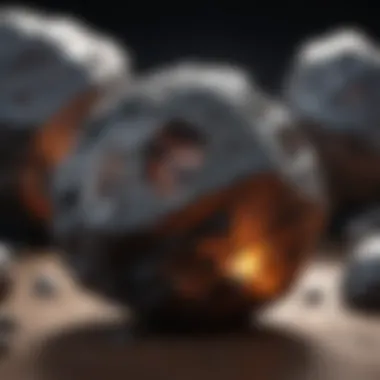
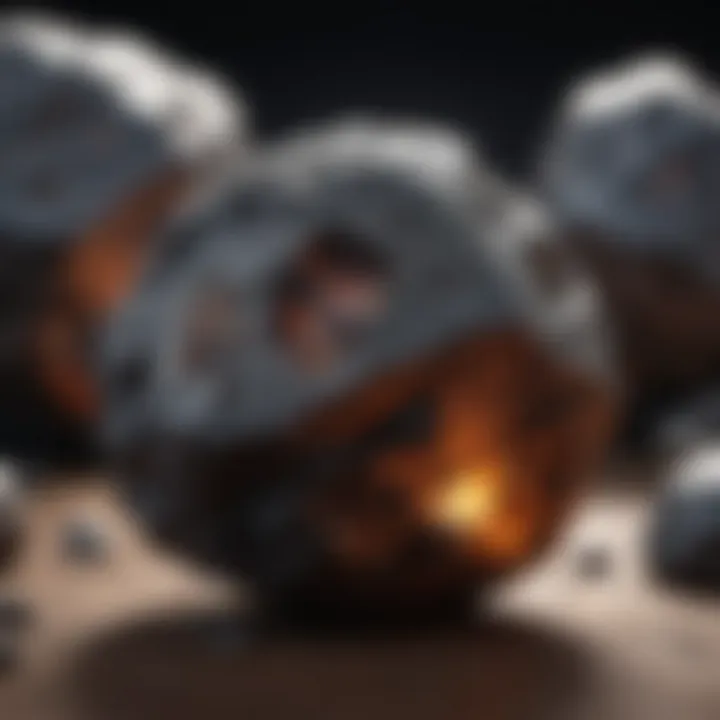
Staying informed, maintaining your collection, and following ethical practices not only contribute to a meaningful hobby but also support the broader scientific understanding of these otherworldly objects.
Identifying Meteorites
Identifying meteorites is a crucial aspect of classification, bridging the gap between the general public��’s muddled perceptions and the scientific reality of these celestial objects. For rock and fossil collectors, grasping the nuances of meteorite identification can prove beneficial for both the collection and appreciation of these otherworldly specimens. The practice not only helps in confirming the authenticity of finds but also significantly enhances one’s overall understanding of meteorites' origins and their place in planetary processes. The five-points checklist below outlines key considerations in identifying meteorites:
- Weight: Meteorites are dense. A piece often feels heavier than regular rocks of similar size.
- Magnetism: Many meteorites are magnetic, especially iron meteorites. A simple test with a magnet can help.
- Surface Characteristics: Look for a fusion crust – a thin, glassy outer layer that forms during its fiery descent.
- Interior Features: Crystalline structures or metal flecks can be good indicators; the presence of chondrules or inclusions also hints at particular classifications.
- Location: Finding a rock in a known meteorite fall area increases its likelihood of being a meteorite.
Meteorites can hold stories of the cosmos, and knowing how to recognize their features arms enthusiasts with better tools for exploration.
Visual Inspection Techniques
Visual inspection serves as the very first step in identifying meteorites, and it mainly relies on an eye for detail and familiarity with distinguishing characteristics. A collector should focus on specific traits that distinguish meteorites from ordinary terrestrial rocks. Here’s a good approach:
- Examine the Surface: The fusion crust is key; it looks dark and shiny, almost like burnt skin. It’s the result of rapid heating during atmospheric entry.
- Texture: Analyzing the texture can also help. Look for a rugged, uneven surface, often marked with pits and small indentations.
- Metallic Appearance: Many meteorites contain high amounts of iron and nickel. Even a glint of metal in your specimen can be a strong indication of its meteoritic origin.
- Color Variations: The color can provide information about the type. Stony meteorites often display shades of gray or brown, while iron meteorites are usually metallic silver or reddish-orange.
- If you see this feature, you might be holding a meteorite.
- This is a telltale sign of a meteorite's travel through the atmosphere.
Proper visual inspection can save a collector from being deceived by ordinary earth rocks that may resemble meteorites at first glance.
Laboratory Testing Methods
If visual inspection raises some flags but the identification remains inconclusive, laboratory testing methods can be employed for a more scientific approach. For the diligent collector, these methods can provide critical insights:
- Thin Section Microscopy: This process involves slicing a meteorite into thin pieces to observe under a microscope. It reveals mineral and crystal structures, helping classify the meteorite accurately.
- X-Ray Diffraction (XRD): XRD is an advanced technique that can identify crystalline phases within the rock, assisting in determining mineral composition.
- Infrared Spectroscopy: This technique uses the infrared spectrum to analyze the chemical composition of the meteorite. It’s particularly useful for identifying organic compounds or alterations caused by terrestrial weathering.
- Chemical Composition Analysis: Labs may utilize mass spectrometry to measure elemental concentrations in your sample, providing insight into its origin.
Incorporating these methods into the identification process adds layers of verification and precision to a collector’s efforts, ensuring that each piece of their collection is authentic and meaningful.
Challenges in Meteorite Classification
Meteorite classification is no walk in the park; it’s an intricate dance of science and analysis. The importance of understanding these challenges cannot be overstated, as they not only inform the methodologies we employ but also shape the very essence of our knowledge about these celestial visitors. Navigating the complexities of meteorite characterization offers insights into their origins and contributes to our overall grasp of cosmic phenomena. Let's unravel two primary challenges that stuff the classification process: overlapping characteristics and environmental influences.
Overlapping Characteristics
One significant hurdle in classifying meteorites is the overlapping characteristics among different types. Imagine trying to find a needle in a haystack, only to discover several needles that look quite similar. This overlap can cloud our judgment, making it tough for even seasoned experts to distinguish between types.
Consider chondrites and certain types of achondrites; both can share textures or mineralogy that confuse classification efforts. For instance, some chondrites may undergo metamorphism, leading them to exhibit features reminiscent of achondrites. Consequently, a well-intentioned classification can sometimes take a wrong turn down the path.
Key elements surrounding this challenge include:
- Mineral Composition: The same minerals may manifest in various meteorites, complicating how we classify them.
- Thermal History: The conditions these meteorites have been subjected to can alter their appearance significantly, blurring classification lines.
This overlapping nature serves as a reminder that nature's palette is richly varied, often defying strict categorization. Thus, one must approach each meteorite with a discerning eye, aware that nothing is straightforward.
Environmental Influences on Classification
Adding another layer of complexity is the environmental impact that can skew our classification efforts. Once a meteorite hits Earth, it’s no longer isolated from our atmosphere. Weathering, corrosion, and other environmental factors can transform its external features, often leading to misclassification.
Consider this: if a meteorite lands in a humid environment, it might develop rust or other surface alterations that make it look akin to terrestrial rocks instead of its celestial counterparts. This brings about issues when enthusiasts or scientists delve into field sampling and ends with misidentified specimens.
Factors affecting meteorite classification include:
- Oxidation: Exposure to moisture can cause oxidation and alteration of surface materials.
- Physical Abrasion: Weather elements like wind and rain can wear down surfaces, erasing critical identifying features.
These environmental influences remind us of the challenges faced not just in the lab, but also in the field. The metamorphosis of meteorites once they touch down can often render prior classifications moot.
In summary, being aware of the overlapping characteristics and environmental influences is crucial for those involved in meteorite studies, whether they are collectors, researchers, or merely enthusiasts. The road to accurate classification is fraught with challenges, but it's also the journey worth taking.
The Future of Meteorite Studies
The exploration of meteorites continues to develop as new methodologies and technologies emerge. The future of meteorite studies holds promising avenues that can enhance our comprehension of these celestial artifacts, which in turn deepen our understanding of our solar system and its evolution. As research progresses, the integration of advanced technologies could shift paradigms in meteorite classification, analysis, and discovery. Moreover, the impending new findings could shed light on the origins of life and other cosmic phenomena, which is fascinating for both researchers and amateur collectors alike.
Advances in Technology
The integration of cutting-edge technology into meteorite studies is revolutionary. Techniques previously confined to specialized labs are now more accessible, allowing wider participation in meteorite research.
- 3D Imaging: Advanced imaging techniques, such as X-ray computed tomography, provide detailed internal structures of meteorites without destructive sampling. This non-invasive method can reveal the internal complexities and the formation process, assisting in classification.
- Automated Analysis: With machine learning and AI, meteorite identification and categorization can achieve unprecedented speed and accuracy. Algorithms that can analyze petrological features quickly help in classifying previously unexamined samples effectively.
- Spectroscopy: Enhanced spectroscopic capabilities allow scientists to analyze the elemental and mineralogical composition with higher precision. This means that the subtle differences that define meteorite types are easier to discern.
- Mobile Field Analysis: Portable equipment that enables field analysis means that collectors and researchers can immediately analyze potential meteorite finds right from the site, reducing the time to understand new discoveries.
"Innovation in technology allows us to unlock the secrets of meteorites with remarkable speed and precision, making research more efficient and engaging for everyone involved."
This push toward advanced technologies opens new doors, creating a wealth of information that can be crucial in the understanding of meteorites and their significance.
Potential New Discoveries
New discoveries in meteorite studies may dramatically change existing knowledge about our solar system's history and composition. As we continue to investigate more meteorites, several avenues hold great potential.
- Extraterrestrial Life Evidence: Meteorites have been studied for biosignatures or clues to the existence of life elsewhere. The ongoing research could lead to the identification of organic compounds that bolster theories about life beyond Earth.
- Planetary Formation Insights: Finding and analyzing a diverse range of meteorites, particularly those that are hypothesized to originate from asteroids or other planetary bodies, brings new perspectives on planetary formation and evolution. It’s akin to piecing together a cosmic jigsaw puzzle, where every meteorite adds a vital piece.
- Changing Classification Paradigms: As new meteorites are classified, current models may need revisions. For instance, the discovery of a novel type could lead to rethinking how we categorize meteorites based on their chemical and physical properties.
- Impact Events: Studying meteorites that are remnants of impact events can provide valuable insights into the history of our planet and its dynamic processes.
As we venture further into the age of discovery, the continued studies in meteorites could redefine our understanding of cosmic phenomena, feeding immense curiosity among scientists and collectors alike.
Ending
Understanding the classification of meteorites is crucial for both enthusiasts and researchers, as it opens a window into the history of our solar system. This article has traversed through various classification types, methodologies used in categorization, and the implications of these cosmic rocks on our understanding of planetary formation. Classification is more than just a label; it provides a framework that scientists use to make sense of the complexities of meteorites. By identifying and categorizing meteorites correctly, not only does one gain insight into their origins, but this also allows for an exploration into planetary processes that shaped our celestial neighborhood.
Summarizing Key Insights
Meteorite classification encompasses a range of types like stony, iron, and stony-iron meteorites, each with distinctive features reflecting their origins. Understanding these categories enables enthusiasts to appreciate the diverse nature of meteorites. For instance, chondrites, being the most prevalent type, act as a time capsule of early solar system material. Conversely, iron meteorites, often recognized by their metallic sheen, provide clues about the cores of differentiated bodies. The methodologies discussed, whether through physical analysis or advanced spectral techniques, allow researchers to unwrap the intricate stories held within these space rocks.
Encouraging Further Exploration
For those captivated by meteorites, the journey does not have to end here. Delving deeper into this subject can unveil a trove of knowledge. Engaging with local collectors' groups or visiting meteorite exhibits can foster a deeper understanding and appreciation of meteorites. Regularly participating in discussions on platforms like Reddit and even studying ongoing research published on sites such as Britannica can keep one in the know about the latest discoveries and analytical techniques. Moreover, as technology continues to evolve, new tools for analyzing meteorites keep emerging; thus, staying abreast of these changes will only enhance one’s comprehension of these fascinating celestial objects. The world of meteorites is as dynamic as it is ancient, and there is always something new to explore!



